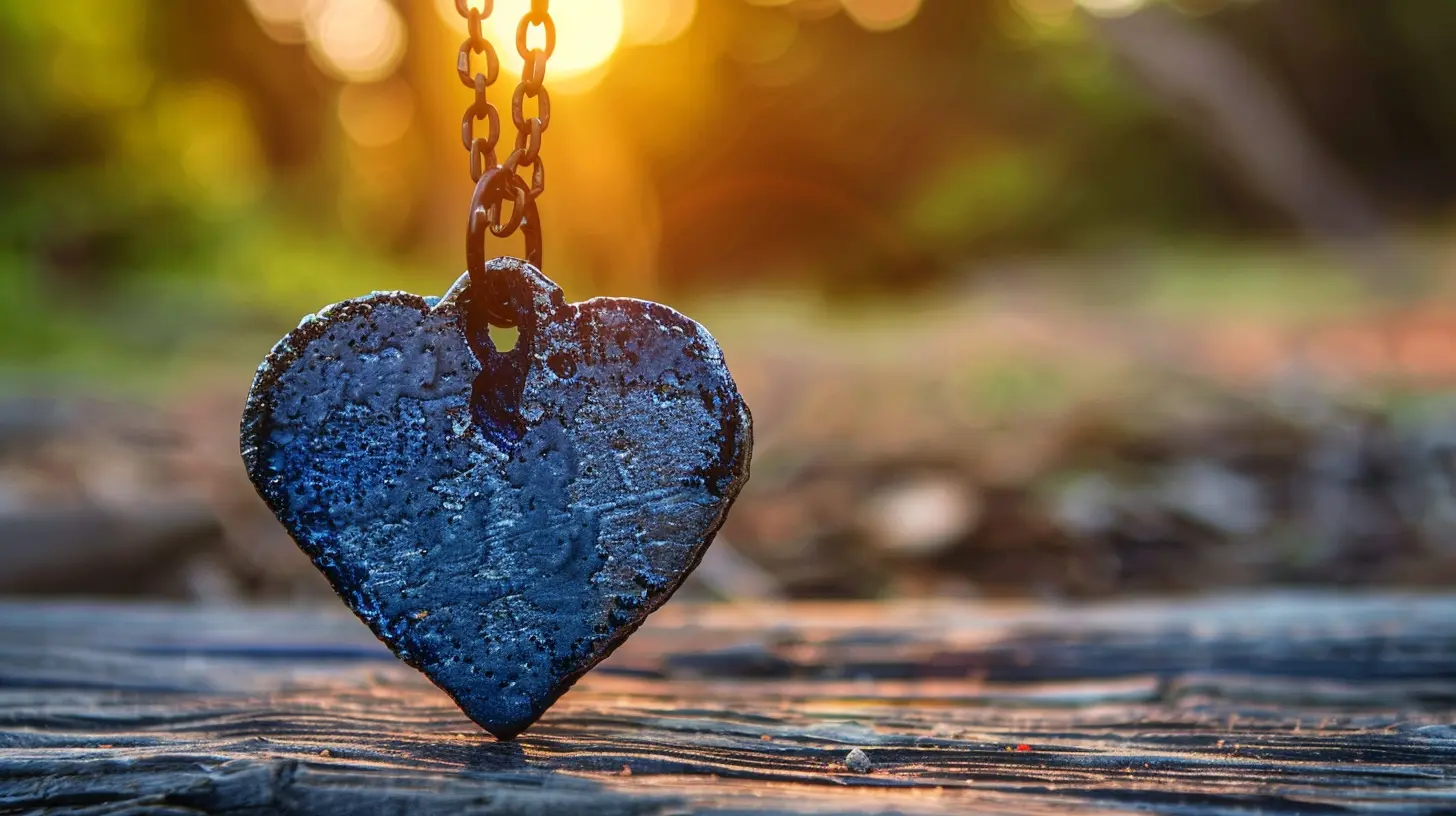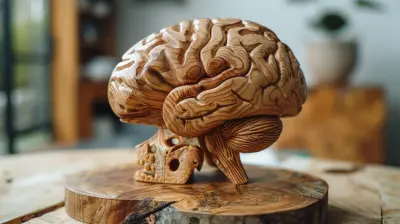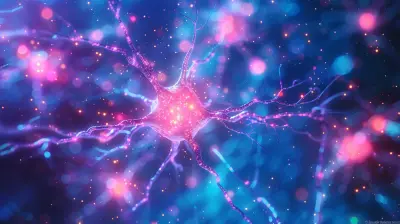Healing After Heartbreak: Coping with the Loss of a Loved One
20 October 2025
Let’s be honest—heartbreak sucks.
Whether it's losing a soulmate, a best friend, or a close family member, the pain of saying goodbye to someone you love feels like emotional whiplash. You’re left standing in a storm of memories, shattered dreams, and a playlist full of sad songs that somehow all make sense now. And healing? Yeah, it seems a million miles away when you're knee-deep in tissues and ice cream tubs.
But heartbreak, while soul-crushing, isn’t the end of your story. It's just a really, really hard chapter.
In this article, we’re going to talk about the not-so-pretty side of loss—and more importantly, how to gradually patch up your heart, rediscover yourself, and maybe even laugh again without feeling guilty. So, let’s dive into the messy, confusing, strangely beautiful journey of healing after heartbreak.
Let's Get Real: What Heartbreak Actually Feels Like
First, let’s call it what it is. Heartbreak is a form of grief. And grief doesn’t care about your schedule, your responsibilities, or your attempts to act “fine.” It’s sneaky—it hits you in the grocery store when you see their favorite cereal, or when your favorite TV show doesn't hit the same without them.Grief is like an uninvited guest who overstays their welcome. It shows up in waves. One moment, you're functioning like a semi-normal human, and the next, you're crying because someone in a commercial said “I love you”—and boom, you're back in the emotional trenches.
So, if you’re feeling like a hot mess right now, guess what? You’re doing it right. That’s what healing looks like in the beginning—messy, irregular, and totally human.
Why Doesn't Anyone Teach Us How to Grieve?
Wouldn’t it be great if, along with long division and mitochondria facts, school taught us how to handle heartbreak? Unfortunately, most of us stumble our way through grief, hoping we’re not doing it 'wrong.'Spoiler alert: There is no "wrong" way to grieve.
Some people cry. Others go numb. Some journal like Shakespeare on a heartbreak bender. Others binge-eat Takis and rewatch "Friends" until they can quote every line. All of those are valid ways of coping—as long as they don’t hurt you or others.
The key is permission. Give yourself permission to grieve in your way. Period.
Step #1: Feel All the Feels (Even the Ugly Ones)
Let’s not sugarcoat it—you’re going to feel things you might not love. Anger. Guilt. Confusion. Jealousy. Regret. And of course, a bottomless sadness that feels like someone swapped your heart for a lead balloon.Feel it all anyway.
Stuffing feelings down is like trying to keep a beach ball underwater. Sooner or later, it's going to pop up—probably at the worst possible time (like in a work meeting or during an awkward first date).
So yes, cry until your face feels like a salted raisin. Scream into your pillow. Talk to the air like they're still around. All of it matters. It’s your mind’s way of processing the loss.
Step #2: Talk About It (Even When You Don’t Want To)
We humans are social creatures—even the introverted ones. When you’re heartbroken, isolating yourself might feel like the safest option. But healing doesn’t happen in a vacuum. You’ve got to let the light in somehow.Talk to someone. Anyone. A therapist, a friend, a dog—heck, even a plant. Speaking your truth out loud helps organize the emotional chaos in your head.
If you're not ready to talk out loud? Write it. Journaling is a free, judgment-free mini therapy session. Start with: “Today, I feel like ___ because ___.” Let your hand do the rest.
Step #3: Honor Their Memory (Without Becoming a Time Traveler)
It’s tempting to stay stuck in the past. You rerun highlight reels of your favorite moments, trying to live there instead of here. But while memories are beautiful, they aren’t meant to be permanent homes. They're more like postcards—glimpses of what was, not where you are now.Try this: Do something to honor them that fits with your personality. Plant a flower, light a candle, bake their favorite cookies, or start a mini “legacy project.” It's a way of saying, “You mattered. You still do.” And that helps the heart a lot.
Just remember to anchor yourself in the present while you do it. Don’t let the past steal your life.
Step #4: Make Room for the Weird Healing Stuff
Here’s the quirky part—healing doesn’t always arrive in poetic ways. Sometimes, it shows up through bizarre hobbies or unexpected Instagram scrolling.Suddenly into aerial yoga? Go for it.
Want to try pottery because it feels therapeutic to smash clay? Heck yes.
Randomly crying while watching a kid pet a dog at the park? Totally normal.
Healing is weird and wild. It doesn’t follow logic or timetables. It sneaks up on you when you’re not trying too hard. So be open to doing strange things that bring you small moments of peace.
Step #5: Be Kind to Yourself (Like, Really Kind)
We can be our own worst critics, especially when we’re in pain. “Why am I not over this yet?” “Why do I still cry every time I see their sweater?” “Am I broken?”Let’s flip the script. Imagine your best friend was going through what you are. Would you tell her to “just move on already”? Heck no. You’d hug her, hand her a blanket burrito, and reassure her she’s doing the best she can.
You deserve that same gentleness.
Here's a mantra to use on repeat: I’m grieving, I’m healing, and that’s okay. Say it ten times a day if you need to.
Step #6: Rediscover Yourself (You’re Still In There)
When we lose someone close, it can feel like we’ve lost a piece of ourselves too. Who am I without them? What do I do with this extra emotional luggage and empty time?This is your gentle nudge to start exploring you again.
Try things you used to love before they entered your life. Pick up new interests. Wear clothes that make you feel like a confident weirdo. Reinvent your playlist. Travel to a funky small town just because it has a giant potato statue (yes, that exists).
The idea isn’t to forget them—it’s to remember yourself.
Step #7: Accept That Healing Isn’t Linear
Here’s the truth people avoid: You’re going to have good days… and then really, really bad days that sneak up when you least expect it.And? That’s. Completely. Normal.
Healing isn’t a straight line. It’s a squiggly, looping, drunk-on-emotions roller coaster. Some days you’ll laugh so hard your belly hurts, and other days you’ll hear a certain song and dissolve into a puddle of pain.
Both types of days matter. Both are valid. Neither means you’re “going backward.”
Step #8: Seek Meaning Over Closure
Closure is kind of overrated.The idea that you’ll someday get a neat, tidy explanation tied up with a bow? It’s comforting, but not always realistic. People leave, relationships end, tragedies happen—and sometimes we don’t get the why.
What is helpful is seeking meaning.
Ask yourself:
- What did this person teach me?
- How did they impact my life?
- How am I different (in a good way) because of them?
Meaning isn’t about moving on. It’s about moving forward with your love and memories, not despite them.
Quirky Ways to Help Heal a Broken Heart
Because why should healing be boring?- Write them letters and keep them in a “Memory Journal.”
- Create a playlist titled “Songs That Feel Like a Hug.”
- Join a grief group and bond over awkward silences and deep feels.
- Start a ritual—like lighting a candle every full moon in their memory.
- Get a grief buddy (yes, that’s a thing). Someone you can text “I miss them today” without needing a reply.
- Make a “Joy Jar”—jot down tiny happy moments and stuff them in there. Read them when you’re down.
Healing doesn’t have to be solemn. You’re allowed to blend your sorrow with splashes of silliness and creativity.
In Case No One’s Told You Lately…
You’re doing beautifully, even when it feels like you’re falling apart.Healing after heartbreak is brave work. It takes guts to grieve, to keep getting out of bed when it hurts, to laugh when you feel guilty for doing so. Every tear, every deep breath, every step forward (and back) is part of the journey.
Yes, heartbreak breaks you open—but sometimes, that’s how the light gets in.
So be gentle with yourself. Be patient. And remember this: You won’t always feel like this. The pain might not vanish completely, but it will soften, like ocean waves that once crashed and now merely ripple.
One day, you’ll wake up and feel a little lighter. Maybe not healed, but healing. And that’s enough.
all images in this post were generated using AI tools
Category:
Grief And LossAuthor:

Eliana Burton
Discussion
rate this article
1 comments
Ryder Lee
This article beautifully captures the complexities of healing after heartbreak. It’s a gentle reminder that while the journey is tough, embracing our emotions and seeking support can lead to profound growth. Thank you for sharing such valuable insights!
October 29, 2025 at 3:30 AM

Eliana Burton
Thank you for your kind words! I'm glad the article resonated with you and highlighted the importance of embracing emotions and seeking support in the healing process.


